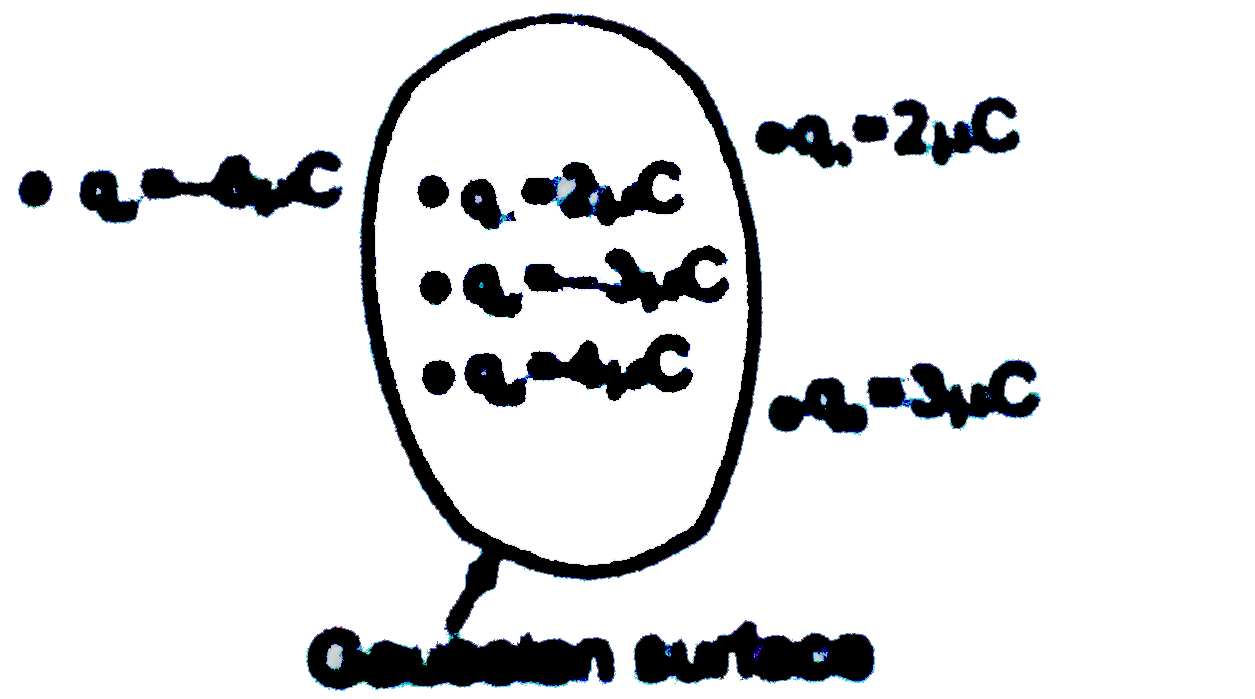Assertion(A):If Gaussian surface does not enclose any charge then →E at any point on the Gaussian surface must be zero.
Assertion(R ):No net charge is enclosed by Gaussians surface,so net flux passing through the surface is zero.
A
Both A and R are true and R is the correct explanation of A
B
Both A and R are True but R is not the correct explanation of A.
C
A is true and R is false
D
A is false and R is true.
Video Solution
Text Solution
The correct Answer is:D
If Gausian surface does not enclose any charge then →E at any point on the Gaussian surface may be zero.
|
Topper's Solved these Questions
- ELECTROSTATICS AND GAUSS LAWBook:NARAYNAChapter:ELECTROSTATICS AND GAUSS LAWExercise:Intergers type question
Explore 11 Videos
- ELECTROSTATICS AND GAUSS LAWBook:NARAYNAChapter:ELECTROSTATICS AND GAUSS LAWExercise:Passage VII
Explore 3 Videos
- ELECTROSTATIC POTENTIAL AND CAPACITANCEBook:NARAYNAChapter:ELECTROSTATIC POTENTIAL AND CAPACITANCEExercise:ADDITIONAL PROBLEMS
Explore 14 Videos
- EXPERIMENTAL PHYSICSBook:NARAYNAChapter:EXPERIMENTAL PHYSICSExercise:Comprehension type
Explore 6 Videos
Similar Questions
Knowledge Check
If net charge enclosed by a Gaussian surface is zero, then
Assertion :- →E at any point on Gaussian surface is 0.
Reason :- No net charge is enclosed by Gaussian surface, so E = 0AIf both Assertion & Reason are True & the Reason is a correct explanation of the Assertion.BIf both Assertion & Reason are True but Reason is not a correct explanation of the Assertion.CIf Assertion is True but the Reason is False.DIf both Assertion & Reason are False.If negative charge is enclosed by the surface, then the T. N. E. I. over the surface will be
Adirected outwards and considered positiveBdirected inwards and considered positiveCdirected outwards and considered negativeDdirected inwards and considered negativeGaussian surface should not pass through any discrete charge because:
AElectric field remains constantBElectric field becomes zeroCElectric field due to system of discrete charge is not will defined at location at any chargeDElectric field is continuous charge distri bution
Find out flux through given gaussian surface.

View SolutionA surface enclosed an electric dipole, the flux through the surface is -
View SolutionA Gaussian surface enclosed no charge. Which of the following is true for a point inside it ?
View SolutionIf the size of the gaussian surface increases, the flux through the body:
View SolutionA point charge 4μC is at the centre of a cubic Gaussian surface 10 cm on edge. Net electric flux through the surface is
View Solution


